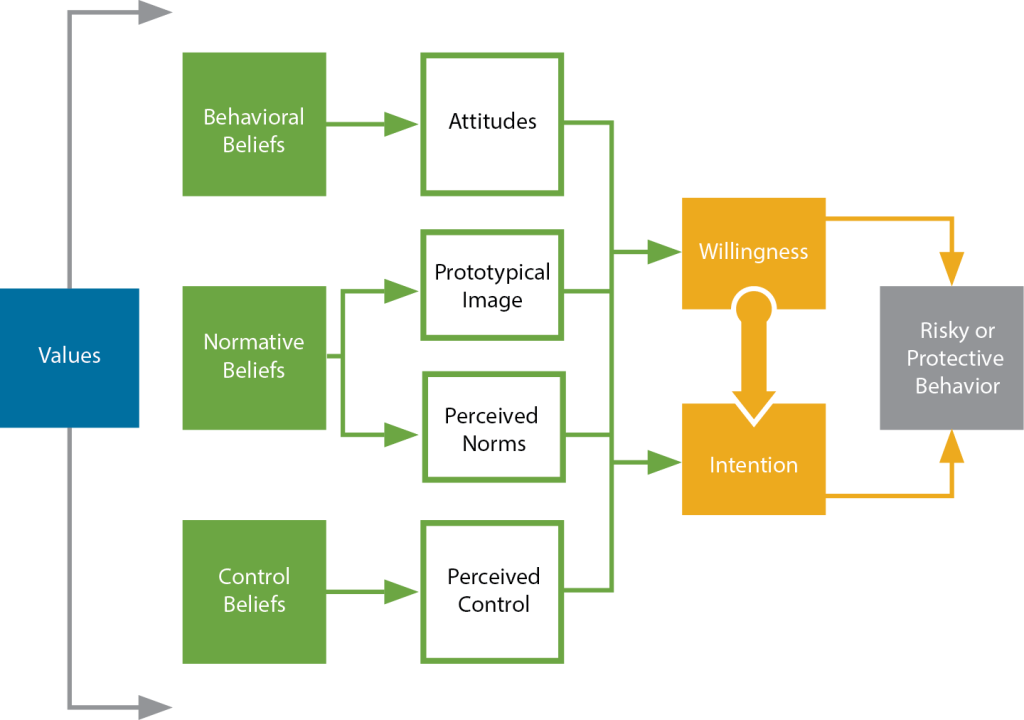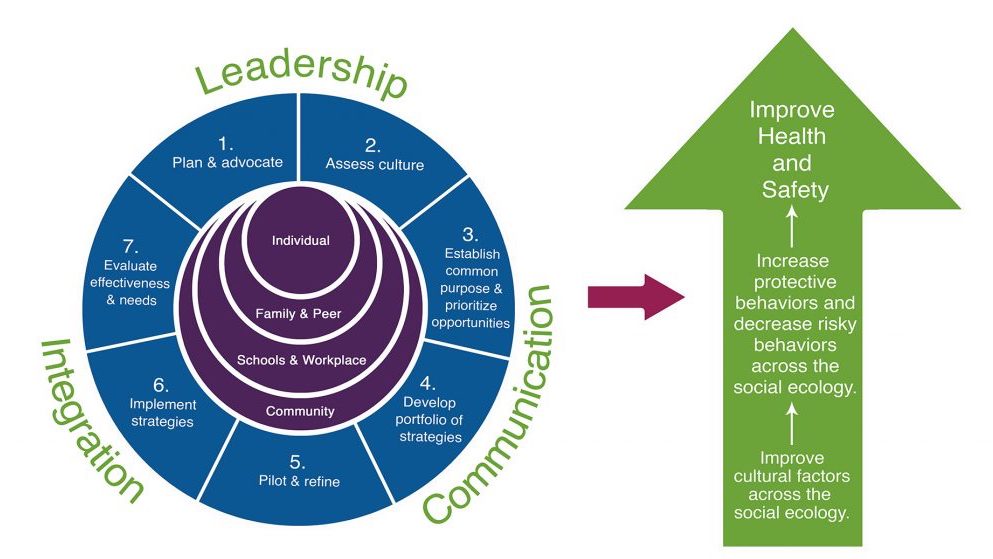The Positive Culture Framework...
GROWS existing positive shared values and beliefs, which support health and safety.
We believe the positive exists and is worth growing. We reject using fear to motivate change. The Positive Culture Framework focuses on revealing and growing positive, shared values and beliefs, which result in healthier and safer behaviors. This perspective does not mean that we ignore or minimize the negative, harm, or risk that communities face. The Positive Culture Framework raises both concern and hope to foster engagement, create energy, and bolster self-efficacy to move forward.
REACHES across the social ecology.
The Positive Culture Framework cultivates health and safety across all layers of the social environment (or social ecology) including individuals, families, schools, workplaces, organizations, local and state governments, etc. These layers influence a community’s culture. Behavioral modeling is used to reveal values and beliefs that support healthier and safer behaviors. Then, within each layer of the social ecology, the focus is on growing these values and beliefs.
GUIDES action and develops skills.
Improving health and safety is more than just implementing a program, strategy, or countermeasure. Improving health and safety is a process. The Positive Culture Framework provides concrete steps in a well-organized process, a context to engage in the steps, and critical skills necessary to be effective. Improving health and safety is an act of leadership –leading people to make healthier and safer choices. Growing shared values and beliefs can be challenging, as people often resist questioning their core assumptions. Leadership skills are critical for effectiveness.
All efforts to improve health and safety involve communication. Often, well-intentioned communication efforts addressing health and safety have minimal results and sometimes have even caused harm. We use communication to grow shared purpose and understanding, to raise concern and hope, and to motivate action.
There is no single strategy that will address complex health and safety issues. A portfolio of strategies working across the social ecology and continuum of care is required. Integration skills are needed to actively manage and align a portfolio of strategies. Successful integration increases resource utilization, reduces competition and fosters cooperation, aligns purpose, and increases the effectiveness of efforts.

Is for people who want to be more effective at improving health and safety.
The Positive Culture Framework is valuable for leaders, managers, practitioners, and stakeholders working in all areas of health and safety, such as public health, traffic safety, child abuse prevention, and domestic violence prevention. It is applicable to and can be used to address a wide variety of issues at the national, state, local, and organizational levels. Communities have used the Positive Culture Framework to guide their grant-funded prevention work, including federal Drug-Free Communities (DFC) and Strategic Prevention Framework (SPF-SIG and SPF-PFS).

This is a graphical representation of the Positive Culture Framework. The left describes what we're going to do, where we're going to do it, and how we're going to do it. The right side describes our desired outcome. On the right, the symbol for our outcome is a large green arrow pointing upward.
A Brief History – From Social Norms Marketing to the Positive Culture Framework
Decades ago, we were known as Most of Us® and we focused on reducing underage substance misuse (and other risky behaviors) by seeking to correct misperceptions of norms using social marketing techniques. Our focus then was on social norms marketing, which sought to correct widely held misperceptions among youth and adults about what behaviors were typical and expected.
Social norms marketing then evolved to address normative misperceptions across the social ecology. Our name shifted from Most of Us® to the Center for Health and Safety Culture, and our approach, called “Positive Community Norms,” expanded social norms marketing campaigns to reach across the social environment of communities.
In 2014, the Center evolved again. We began using more comprehensive behavioral modeling and recognized that not only normative beliefs influence behavior – but other beliefs are critical to address as well. We expanded our approach beyond only using social norms marketing. We developed (pioneered) a working definition of culture. Our new framework is called the Positive Culture Framework.
